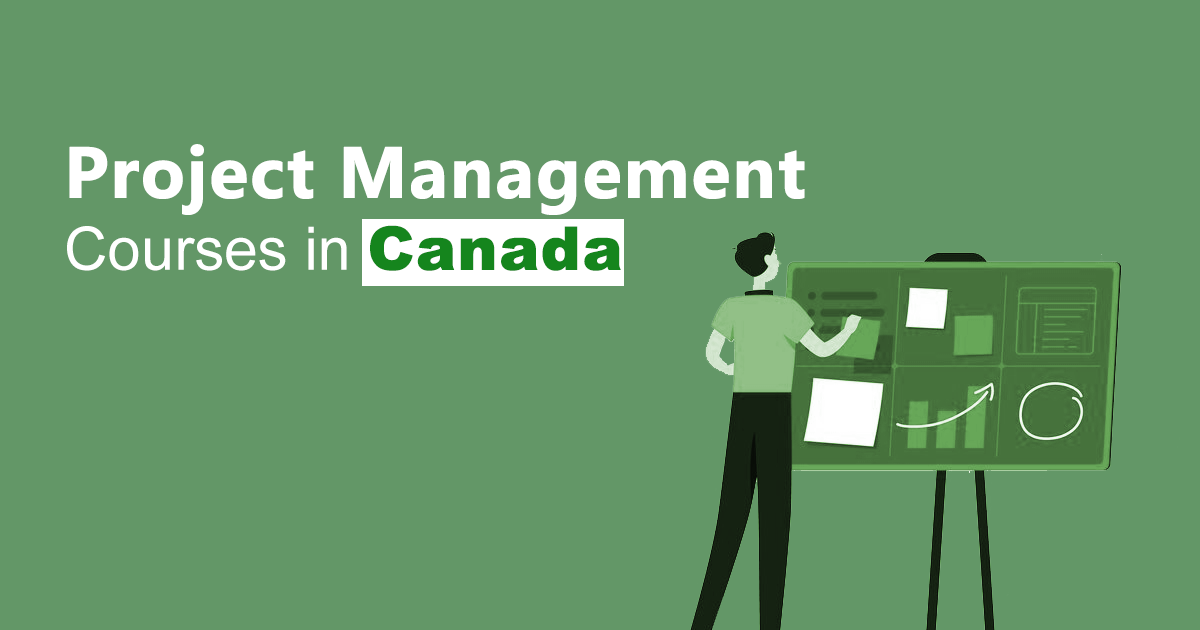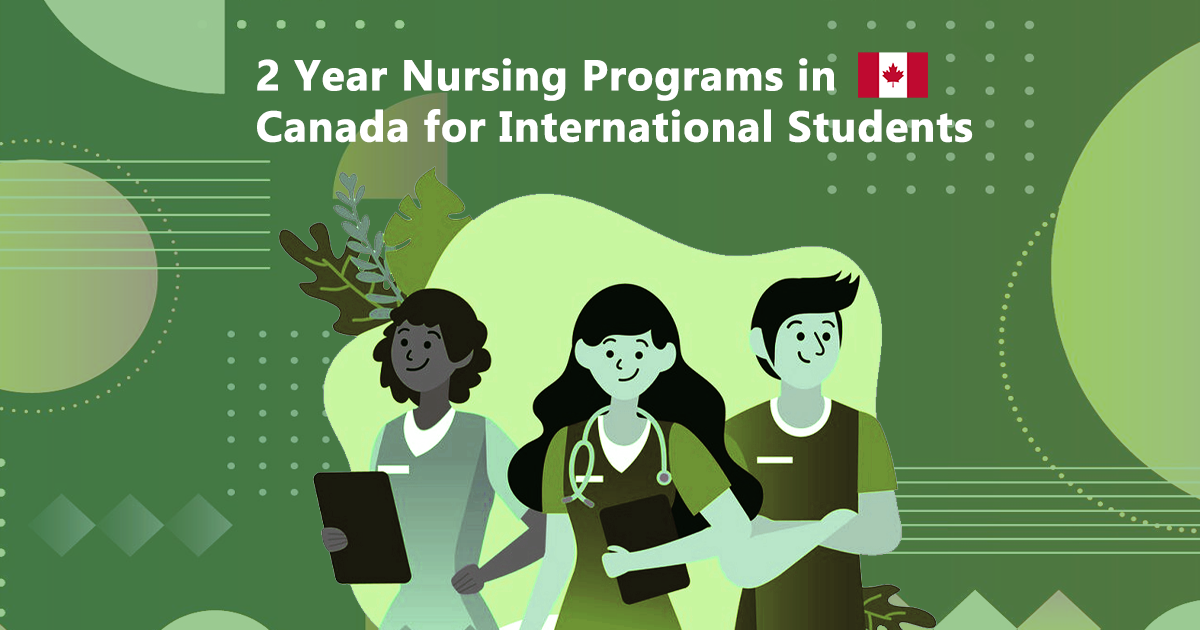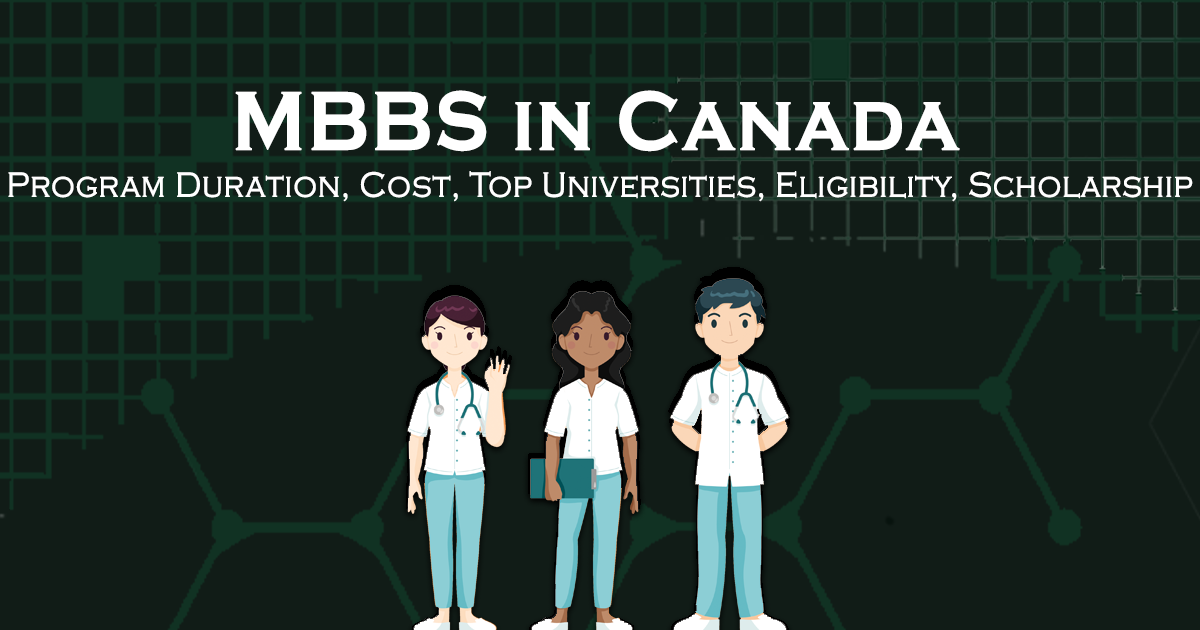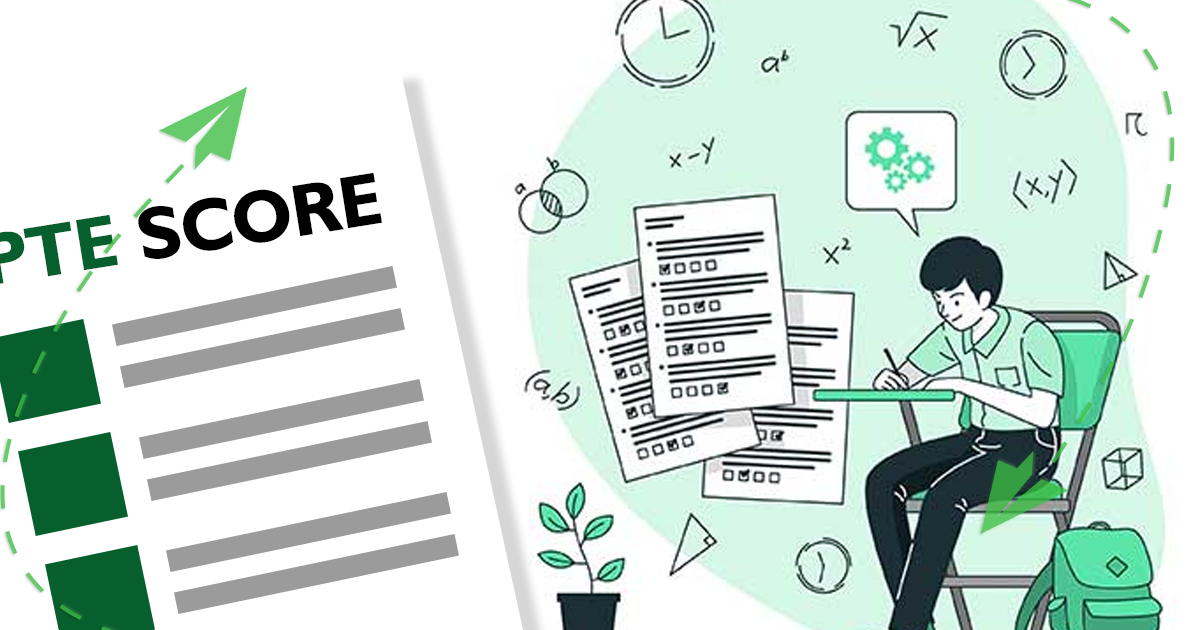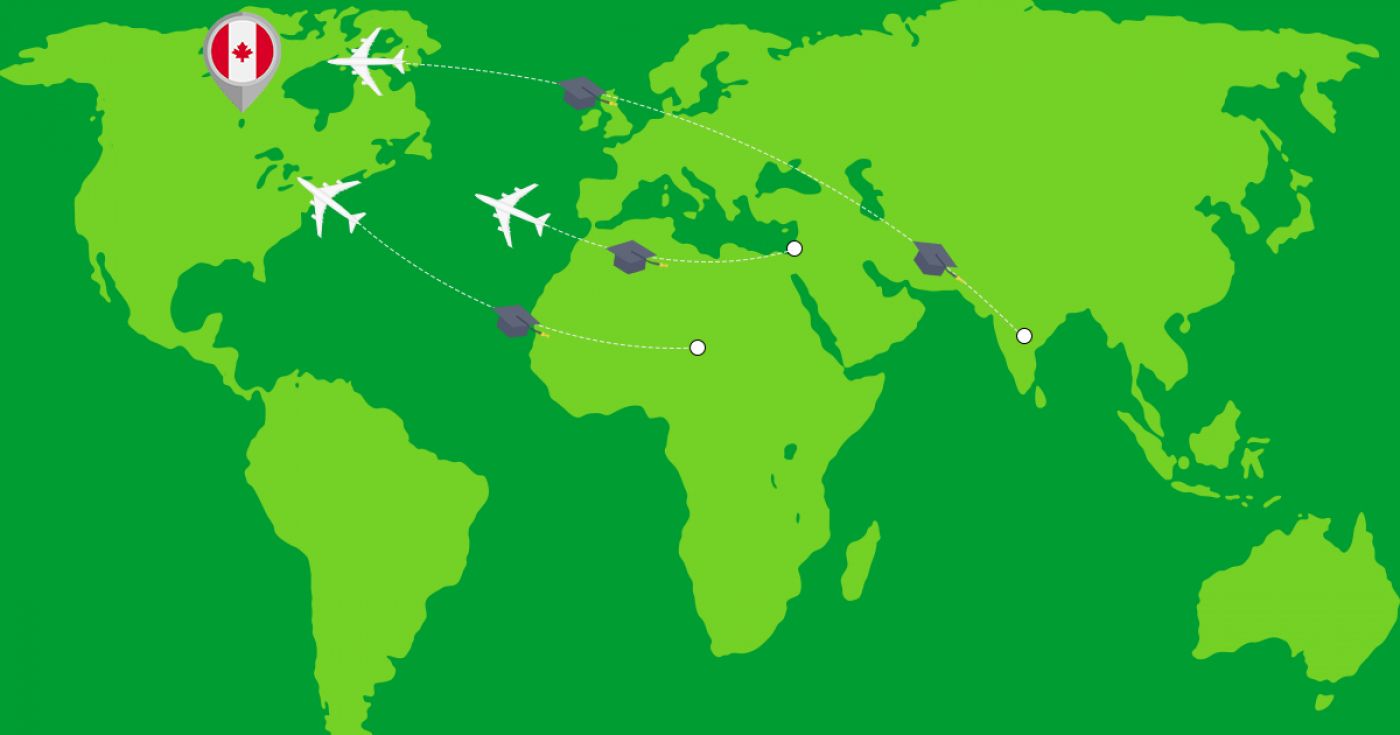Advanced Diploma in Mechanical Engineering Technology
at Humber College North Campus Canada
Overview
Humber’s Mechanical Engineering Technology advanced diploma program prepares you for a career in the design and manufacturing of mechanical components and applications. The curriculum covers the theory and the skills required to:
- Program computer numerical control (CNC) machine tools using computer-aided manufacturing (CAM) software – Mastercam
- Apply design principles and practices
- Design and manufacture process problems
- Learn 2D computer-aided design (CAD) software - AutoCAD, 3D CAD software – SolidWorks
- Design and manufacture mechanical parts and assemblies
- Apply design principles and practices to a variety of engineering problems and environments
Our program builds upon the solid technical foundation of the Mechanical Engineering Technician program. The skills first learned in the technician program are enhanced through project-based learning and increased hands-on practice in the labs.
This program offers a co-op option. Co-op work terms enable you to apply your skills and knowledge in a work environment and gain valuable, practical experience related to your program of study. You will learn new skills, learn about the world of work and meet people in your profession. For students who are accepted into the program, three co-op work terms will take place. The first four-month work term is between Semesters 2 and 3, and then two consecutive four-month work terms between Semesters 4 and 5. There are limited spaces in the co-op option. Therefore, you will apply for the co-op option during Semester 1 and be informed of the process by which to apply. While co-op work opportunities are not guaranteed, as students are in a competitive job placement market, participating students will receive a wide range of services to help them find a co-op opportunity.
Begin a career designing and manufacturing with a Mechanical Engineering Technology advanced diploma. Our graduates are able to perform engineering design and equipment/technology selection for major components in the design of mechanical systems; liaise with fabrication and engineering staff, as well as with vendors, for technical information and specifications; prepare preliminary and final cost estimates; and prepare and evaluate production processes, costing, tool design and inspection requirements. Graduates work in two main areas:
- Drafting and design, equipment testing, mechanical equipment installation and consulting engineering offices
- The metal cutting industries, programming, cost estimating, quality control and inspection, and in machinery sales
30
Application Processing Days
Under Graduate
Program Level
Fact & Figures
Full Time On Campus
Study Mode
36
Duration
Humber College North Campus
Location
Advanced Diploma in Mechanical Engineering Technology Assistant Fee
$16414
Tuition Fee
$12000
Average Cost of Living
$75
Application Fee
Advanced Diploma in Mechanical Engineering Technology Admissions Requirements
- Minimum Level of Education Required: To be accepted into this program, applicants must have Grade 12 / High School Diploma or equivalent including the following required course(s):
- Grade 12 English (ENG4C or ENG4U or equivalent)
- Grade 12 Mathematics (MCT4C, MDM4U, MCB4U, MGA4U, MCV4U or MHF4U - MAP4C is acceptable at 81 per cent or higher) or equivalent
- Two Grade 11 or Grade 12 C, M or U courses in addition to those listed above,

Get superfast admissions at top Advanced Diploma in Mechanical Engineering Technology institutes in 2024
Benefits of choosing
➤Admission’s guaranteed at Top institutes across the world.
➤Enjoy exclusive application fee waiver’s with Edmissions.
➤Unlimited FREE Counselling sessions with Edmission’s
Experts
➤Get Tips from industry veterans to crack the IELTS exam in 1
week.
➤Assistance with scholarships, loans, forex, student accommodation and visa guidance.
Work Permit Canada
Students who wish to work in Canada require a work permit to do so. A student in Canada can work part-time during the course of his studies and full-time during holidays and semester breaks and post the completion of their course/program.
Rules for getting a part-time work visa in Canada
You can also work part-time on campus at your university.
Work Permit
Duration
Your part-time work permit will be valid for as long as you have a valid study permit.
Working Hours
20 Hours/Week
As a full-time student, you can work for a maximum of 20 hours a week. However, you can work full- time during holidays and breaks.
Document Required to Work in Canada
List
To apply for a work permit, you will need a study permit that mentions that you are allowed to work part-time on campus.
Social Insurance Number
Study Permit
You will need a Social Insurance Number (SIN) to Service Canada. if you wish to work in Canada during the course of your studies. To apply for the same, you need a valid study permit, and you should be a full- time student at a recognized university.

You can work part-time off-campus if you are studying in the Quebec province.
Duration of Work Permit Canada
Your part-time work permit will be valid for as long as you have a valid study permit.
Work Hours Canada
As a full-time student, you can work for a maximum of 20 hours a week. However, you can work full- time during holidays and breaks.
Document Required to Work in Canada
To apply for a work permit, you will need a study permit that mentions that you are allowed to work part-time on campus.
Social Insurance Number
You will need a Social Insurance Number (SIN) to Service Canada if you wish to work in Canada during the course of your studies. To apply for the same, you need a valid study permit, and you should be a full- time student at a recognized university.
Working after completing your course
In Canada, you will need a work permit to get a full-time job in Canada after finishing your studies. You chose a work permit like the Post-Graduation Work Permit (PGWP) if you wish to stay back in Canada and work full-time.
Visit Government of Canada Website for more detail
Post-Graduation Work Permit (PGWP)
The Post- Graduation Work Permit (PGWP) allows you to work for three years in Canada if you have completed a two years degree or more.
Application
how can i apply
You can either apply online or download the form and mail the application along with the required documents. Pay your fee and then wait for the decision to come.
Application Documents Required
List
To apply for the work visa, you need a degree from a recognized and accredited Canadian University along with an intention to stay and work in Canada only temporarily.
When to Apply?
One can apply for the full-time work permit in the first three months post the completion of their course during which the study permit is still valid.
How long does it take?
90 days
You will have to wait for 90 days for the decision on your work permit.
Duration
3 Years
The work permit is valid for 3 years if you have completed a two years degree program or more.
Fees
CAD 255
The fee for the work permit is CAD 255 plus the holder fee and the work permit processing fee.
Monthly Wages
CAD 1,600
An applicant is guaranteed a minimum salary of CAD 1,600 per month while working in Canada. This amount though varies on the job and the province you are working in.
Work Hours Canada
No Limit
There is no maximum limit, and you can work for as many hours as you want on the full-time work permit.

Required Documents
List
To apply for the work visa, you will need the following documents:
- Forms: IMM 5710, IMM 5476 and IMM 5475;
- Graduation Proof
- Proof of payment of work permit fees
- Copies of your travel and identification documents, passport pages and current immigration document.
Till a decision is made on your work visa, you can continue to work full time. All you need to have is your completed degree, should have applied for the permit before the expiry of your study permit and you should be allowed to work off-campus.
Information
Disclaimer
The information provided about the work permit is true and complete to the best of our knowledge. All recommendations are made without any guarantee on the part of the author or the publisher. The author and the publisher, therefore, disclaim any liability in connection to and with the use of this information.
Detailed Program and Facts
30
Application Processing Days
Full Time On Campus
Program Intensity
Under Graduate
Program Level
36
Duration
Study Visa
Student Visa For Canada
Any student who wishes to study in Canada requires a student visa. Some of the essential information for the application process is given below.
When Should I Apply?
4 to 6 months
Ideally, one should apply for the study permit at least 4 to 6 months before the commencement of your course/program.
Bank Account
No Need!
There is no need for a blocked bank account to apply for a student visa to Canada.
Duration of visa
Course Duration + 3 Months
The student visa is valid for the entire period of your course plus three months.
Time to Wait for Visa
35 Days
It takes time. It might take up to 35 days post your interview for the application process to complete and for you to finally receive your visa.
Appointment
Required
It varies from applicant to applicant, but one may have to take part in one or two visa appointments, namely a medical examination and a visa interview.
How you can apply
Application Process
An applicant can either apply online or offline by visiting a visa application centre and submitting their documents. After the analysis of your application, you might be called for an interview.
Fee
Visa Fee
The visa application fee for Canada is CAD 150.
Minimum Funds
833 CAD, 917 CAD
You require a minimum monthly amount to be deposited into your account to prove that you can sustain yourself while studying in Canada. If you are studying in Quebec, you need to have a monthly minimum of CAD 917, and if you are studying in a province except for Quebec, you need to have a minimum of CAD 833 per month.
Any other expenses
Required
You will have to pay a medical examination fee and a visa application service fee to the tune of CAD 15 if you visit a visa application centre to apply for your visa.

Medical Examination
Required
One has to undergo a series of medical examinations to be deemed fit for a student visa of Canada. The tests mostly include blood and urine tests, chest x-rays and other organ checkups.
Language Skills
Not Required
one doesn’t need to prove their language skills in applying for a Canadian Visa.
Disclaimer: The information provided about the work permit is true and complete to the best of our knowledge. All recommendations are made without any guarantee on the part of the author or the publisher. The author and the publisher, therefore, disclaim any liability in connection to and with the use of this information.
Other Courses by Humber College North Campus,Canada
Hospitality, Tourism, Wellness Leisure & Sports
Diploma in Tourism in Travel Services Management
Humber’s Tourism – Travel Services Management diploma program is ideal for those who possess a genuine love of travel, exploration and adventure. The program will provide you with the experience you need to excel in this exciting industry including:
- Tour operations
- Travel agencies
- Tourist boards
- Adventure and eco travel
- Cruise lines, airlines
- Voluntourism
- Educational tour companies
- Sales and marketing
In order to best prepare for this dynamic industry, you will have several opportunities to travel internationally on both short duration trips and for full semesters abroad. In addition, several courses include local travel opportunities that give you hands-on experiences in a variety of tourism and travel products and adventures. In the Trip Planning course, you will plan and execute a travel experience. The program also includes extensive training with the most recognized software systems in the tourism industry.
Fast-track program – Students that start in January will complete the program on a fast-track schedule. The first semester (January to April) is immediately followed by the second semester (May to August), resulting in a short summer break. Students enter Semester 3 in September, completing the two-year program in just 16 months.
Students will apply their skills and knowledge in the fourth semester in a seven-week (32 hours per week) unpaid work placement. Placement opportunities include positions in retail travel agencies, tour operators and destination management companies. You will practise and develop skills selling tourism products, as well as gain introductions to operations, sales and marketing.
Our program is the launching pad to an exciting career in one of the world’s largest, most dynamic industries. Establish your career in:
- Tourism product sales and marketing
- Customer service
- Operations
- Wholesale and retail reservations
- Product planning and niche tourism
- Tour conducting
In this industry, you will have the opportunity to work in Canadian and international markets with tour operators, travel agencies, airlines, destination management companies and other travel suppliers.
24 month
Duration
$ 16414
Tuition
Hospitality, Tourism, Wellness Leisure & Sports
Graduate Certificate in Exercise Science and Lifestyle Management
Humber’s Exercise Science and Lifestyle Management graduate certificate program is designed to build on the knowledge you have acquired in your undergraduate degree by providing in-depth, hands-on instruction in the areas of fitness assessment, health and lifestyle counselling, exercise prescription and delivery, health promotion, group exercise leadership, health and fitness management, marketing and entrepreneurship, ergonomic assessment, and functional abilities assessment. Students learn in small groups instructed by expert faculty currently employed in the fitness and health industry.
Our advisory committee provides regular review and input into our curriculum, ensuring our program is always on the cutting edge of industry developments.
Please note that certain courses in the Exercise Science and Lifestyle Management program require students to participate in fitness classes that will involve physical activity, which may at times be vigorous. Questions about fitness classes and accomodations may be directed to the program co-ordinator at [email protected] or at 416.675.6622 ext. 5188.
Work Placement
Experiential learning is an integral part of this program. The program features three unpaid internship courses, two of which take place on campus and the third of which takes place off campus. During the on-campus courses, students provide fitness assessments and testing, physical activity counselling and prescription services to Humber and partner employees as part of the Humber Centre for Healthy Living (Humber CHL). Students have the opportunity to run workshops for the Humber CHL and its partners, as well as providing healthy tips and videos for the Humber CHL website. Throughout the on-campus internship courses, students participate in seminars with their professors and classmates to critically analyze their experiences and develop the skills required for professional work.
The final work placement is a four-week block placement off campus with one of Humber’s industry partners.
12 month
Duration
$ 19997
Tuition
Hospitality, Tourism, Wellness Leisure & Sports
Graduate Certificate of Hospitality and Tourism Operations Management
Humber’s Hospitality and Tourism Operations Management graduate certificate program is your fast-track entry into one of the world’s most dynamic industries. Gain the skills needed for success in an exciting career in tourism and hospitality management both in Canada and internationally.
The program covers key areas of the tourism industry from human resources to strategic business planning. The curriculum brings the industry into the classroom and connects the student with the industry through guest speakers, field trips and industry engagement.
Enjoy small class sizes, taught by faculty with extensive industry experience and strong tourism and hospitality connections.
Upon successful completion of the program, a graduate will:
- Apply financial management principles including cost accounting, management accounting, and audit practices and procedures.
- Apply management theory and operating practices including the fundamental principles underlying management planning, organizing, directing and controlling in a service-driven industry.
- Use financial operating and statistical reports to assist in intermediate and long-term decision making.
- Assess the adequacy of strategic and operational decisions through the application and analysis of appropriate financial indicators.
- Apply strategic marketing principles and techniques in the development of a sound organizational marketing plan.
- Develop effective customer relations, mange guest problems with empathy and sensitivity.
- Apply the concepts of organizational behaviour with consideration of their impact on hospitality and tourism operations.
- Use relevant and current information systems including the use and application of industry-specific and generic software packages relating to operational planning and management.
- Contribute effectively to the development and implementation of management procedures in the supervision of employees, identify and use appropriate motivational and team-building techniques to achieve desired results.
- Apply government legislation and regulations bearing on the hospitality and tourism industry including occupational health and safety legislation, employment standards and labour relations, and contract law.
- Define ethics, integrity and social responsibility, and assess their importance to hospitality administration.
- Conceptualize and develop a new venture small business plan including the role of the entrepreneur or small business owner/operator in the hospitality and tourism sectors.
- Use effective interpersonal skills in the workplace.
- Use effective oral and written communication skills.
- Conduct meetings and make formal presentations through the use of effective public speaking skills and techniques.
12 month
Duration
$ 18048
Tuition
Engineering & Technology
Diploma in Electrical Engineering Technician Control Systems
Humber’s Electrical Engineering Technician – Control Systems diploma program focuses on three major concentrations in electrical engineering:
- Power industry
- Process instrumentation
- Programmable logic controllers (PLCs).
Our courses are designed in collaboration with an industry advisory panel, ensuring you learn current and relevant material. The program blends classroom theory with laboratory work on subjects such as electric devices and circuits, digital and programming fundamentals, power generation and distribution, electrical computer-aided design and drafting (CADD), electrical code, programmable logic controllers (PLCs), and technical communications.
Complex and challenging assignments prepare you for the realities of a control systems and electrical engineering career. Jump-start your career in the power industry, process instrumentation field as a control specialist or working with programmable logic controllers (PLCs). Our graduates can find work as technicians – designing, maintaining, servicing or selling automated industrial, electrical machines, electrical control, power and process instrumentation systems and equipment. Some employers of our graduates include ABB Inc., Aztec Electrical Supply, Canada Bread, City of Brampton, Street Lighting Department, Eastern Power Limited, Enersource Hydro Mississauga, Siemens Building Technologies Inc., Toronto Transit Commission (TTC), Hydro One and Ontario Power Generation.
24 month
Duration
$ 17608
Tuition
Hospitality, Tourism, Wellness Leisure & Sports
Graduate Certificate in Sport Business Management
Humber’s Sport Business Management graduate certificate program prepares you for employment within the broader areas of sport, with particular emphasis on management in the industry. You will develop knowledge and skills in areas such as the structure and functionality of the Canadian sport industry, sport marketing, sales, sponsorship, communications, sport hosting, event planning and management. You will also learn the practical business, human resources and administrative skills to pursue a career in the industry.
Learning Outcomes
- Upon successful completion of the program, a graduate will:
- Communicate information related to sport business persuasively, accurately and credibly in oral, written and graphic forms.
- Apply computer skills and knowledge to support sport business management functions.
- Develop strategies for successful sponsorship programs and create and implement sport sponsorship packages.
- Identify, analyze and develop advanced management competencies.
- Analyze the impact of various international economic, legal, cultural, geographical and political systems on national and international sport organizations.
- Identify and analyze areas of civil law and governance that are relevant to the sport industry.
- Develop ongoing strategies and plans to enhance personal and professional growth and promote development as sport professional executives.
- Apply accounting and financial management skills to the analysis and management of a sport organization or enterprise.
- Effectively manage the development of staff and volunteers to optimize their contribution to a sport organization, enterprise or event.
- Transfer theoretical understanding to work in a variety of sport organizations, practicing as a competent, professional sport manager who respects legal and ethical standards.
- Research, analyze and systematically solve problems and make decisions using higher order thinking skills to develop strategies to meet information needs of internal and external sport stakeholders.
- Participate in the development and execution of sport business plans and manage risk.
- Create, plan, bid and implement sport and special events which respond to identified needs and maximize the delivery of the personal, social, environmental, and economic benefits of sport tourism.
- Develop and execute a strategic sport marketing plan including marketing objectives, marketing mix, strategies, budgetary considerations and evaluation criteria.
- Develop customer service strategies to meet the needs of all internal and external sport business customers and partners.
- Develop and implement selling strategies for both spectator and participant driven sport events.
Work Placement
- The work placement consists of two components and occurs across industry sectors including professional and amateur sport, sport governing bodies, sport marketing and event management companies, community and private sector sport organizations. The placement provides valuable experience and industry contacts. The first component of the placement is concurrent with coursework and is a minimum of 210 hours. The second component of the placement is six weeks in length and a minimum of 35 hours per week.
12 month
Duration
$ 18048
Tuition
Hospitality, Tourism, Wellness Leisure & Sports
Diploma in Hospitality - Event Management
Humber’s Hospitality - Event Management diploma program offers you the knowledge, practical experience, industry exposure and professional certification necessary to embark on an exciting and successful career as an event planning professional.
Our program provides comprehensive learning and training opportunities aimed at assisting students prepare for and transition to valued positions in the event industry including:
- On-site event management experience
- Guest lectures from industry professionals
- Field trips to local events and elite GTA event venues
- Networking at industry conferences
- Case studies to broaden knowledge of planning events locally, nationally and internationally
In the first semester of the program, you get immediate experience on campus working at a high profile event. And for the next two years, you will be thoroughly immersed in the world of special events via networking, volunteering and event execution opportunities. Students will be working in The Humber Room restaurant live lab for a full semester. Essential skills will be taught to prepare students for many different types of events.
Work Placement
Work experience is integral to developing a diverse and successful career in the event management profession. In this program, you will participate in a comprehensive seven-week work placement experience (280 hours) in your final semester before graduation. While on work placement, you will apply the knowledge and skills you have learned in the classroom to real event work in the field, network, and develop professional connections and relationships you will carry with you throughout your career.
24 month
Duration
$ 16414
Tuition
Health Sciences, Nursing and Emergency Services
Advanced Diploma in Traditional Chinese Medicine Practitioner
Humber’s Traditional Chinese Medicine (TCM) Practitioner advanced diploma program is the first and only publicly funded program of its kind offered at a postsecondary institution in Canada. This intensive program is grounded in the TCM Practitioner skillset which has been approved by all provincial TCM regulators in Canada and provides students with the skills and professional experience necessary to become a TCM Practitioner in Ontario. Through a combination of theoretical course-based instruction, as well as several clinical placements, you will gain a necessary understanding of Traditional Chinese and Western medicine practices. Moreover, graduates of the TCM Practitioner program will be trained to conduct a TCM diagnosis and develop appropriate treatment plans by utilizing their skills in acupuncture, herbal medicine, clinical practice management, professionalism and safety. This program is also committed to the promotion of evidence-informed practice of TCM through scientific research.
Learning Outcomes
Upon successful completion of the program, a graduate will:
- Critically analyze and evaluate Traditional Chinese Medicine Practitioner (TCMP) theories and treatment methods to develop professional knowledge and skills required for the profession.
- Assess, diagnose and treat patients using Traditional Chinese Medicine Practitioner (TCMP) principles, knowledge and treatment methods including acupuncture, herbal medicine, internal and external medicine.
- Perform safe, ethical and effective TCMP skills within a clinical setting.
- Evaluate patients incorporating a bio-medical approach with Traditional Chinese Medicine Practitioner (TCMP) examination techniques to formulate a TCMP diagnosis and treatment strategy, and perform the treatment in a skillful and professional manner.
- Communicate effectively and educate patients, families, the community and other healthcare providers when providing TCMP practices.
- Advocate for Traditional Chinese Medicine as an effective complementary medicine.
- Adhere to the relevant provincial and federal legislation governing the profession while engaging in safe practices.
- Access current and pertinent research regarding practitioner self-care to maintain a healthy practice.
- Maintain client and business records using professional business practices of a TCMP.
- Establish interprofessional relationships with TCM colleagues and healthcare team members.
- Develop a plan for personal and professional development to enhance work performance and maintain currency in the field.
- Evaluate and implement environmentally related initiatives relevant to the Traditional Chinese Medicine Practitioner (TCMP) profession.
- Apply basic entrepreneurial strategies to identify and respond to new opportunities.
Work Placement
- There are seven mandatory clinical placements that provide students with progressive, professional practice experience in diagnosing, preparing treatment plans, inter-professional collaboration and safe practices. Clinical placements occur throughout the year at community TCM and multi-discipline clinics within the greater Toronto area, as well as at our on-site partner clinic, the Tzu Chi Clinic of Traditional Chinese Medicine. The clinical component of the program offers more than 800 hours of direct patient contact, which exceeds the regulatory body minimum requirement of 500 hours.
36 month
Duration
$ 16414
Tuition
Business & Management
Graduate Certificate in Professional Accounting Practice
Humber's Professional Accounting Practice graduate certificate program provides you with the required knowledge and skills essential to begin and advance in the field of accounting. You will be well prepared for careers in the field with knowledge of all accounting disciplines including financial accounting, management accounting, audit and assurance, finance, and personal and corporate tax. You will also develop computer technology, management, problem-solving and critical thinking skills, along with professional communication and interpersonal skills. This program is a path for students already holding a bachelor's degree in any discipline other than accounting and who are interested in pursuing the Chartered Professional Accounting designation. No prior accounting knowledge is required.
Learning Outcomes:
Upon successful completion of the program, a graduate will:
- Record all transactions in accordance with the professional accounting conceptual framework for financial reporting.
- Prepare accurate, relevant and timely corporate financial statements and other financial information according to the respective needs of stakeholders.
- Identify and analyze relevant financial and managerial accounting information to support effective decision-making.
- Produce and present accurate and timely financial information using relevant technology.
- Utilize statistical techniques effectively in the analysis of financial information.
- Recommend effective information systems structures to support efficient business operations.
- Recognize legal limitations and implications arising in business situations and make recommendations to mitigate risks.
- Communicate across various levels in an organization clearly, concisely and accurately in both the written and spoken form to fulfill the intended purpose.
- Apply ethical, discipline-specific practices that contribute to the local and global community through social responsibility, economic commitment and environmental stewardship.
- Apply corporate finance techniques to support strategic and operational management decisions.
- Interpret and apply personal and corporate tax legislation to ensure compliance.
- Plan effective external, internal and information systems audits to meet compliance and assurance requirements.
Work Placement
Humber has the only graduate certificate of its kind in Ontario that provides students with hands-on work experience in the field of accounting. Through a mandatory 160 hour work placement, students will make industry connections and can gain experience in small, medium and large organizations, and in entrepreneurial start-ups.
12 month
Duration
$ 26202
Tuition
Engineering & Technology
Advanced Diploma in Electromechanical Engineering Technology
In Humber’s Electromechanical Engineering Technology advanced diploma program, you’ll learn how to support the engineering activities of manufacturers that rely increasingly on automation technology to maintain a competitive edge in the global economy. You will develop skills in industrial automation, robotics, control systems, machining, hydraulics, pneumatics, safety, mechatronics, programmable logic controllers (PLCs), automation welding, machine elements and computer-control methods. You will also learn to decipher mechanical and electrical schematic drawings, and use electrical and mechanical diagnostic tools.
Our program builds upon the solid technical foundation of the Technician program. The Technology graduate is prepared to enter a wider range of careers. The skills first learned in the Technician program are enhanced through project-based learning and increased hands-on practice in the labs.
Complementing your technical education are the effective communications, problem-solving and interpersonal skills that add value to any team. Coursework reflects real-world demands through independent and co-operative study in practical environments including experience with industrial standard equipment. The industry relevant curriculum is taught by faculty at the top of their fields to provide you with the skills and knowledge employers are looking for.
Our advisory committee provides regular review and input of our curriculum ensuring our program is always on the cutting edge of industry developments. The program offers an optional co-op placement.
Optional Co-op
This program offers a co-op option. Co-op work terms enable you to apply your skills and knowledge in a work environment and gain valuable, practical experience related to your program of study. You will learn new skills, learn about the world of work and meet people in your profession.
For students who are accepted into the program, three co-op work terms will take place. The first four-month work term is between Semesters 2 and 3, and then two consecutive four-month work terms between Semesters 4 and 5. There are limited spaces in the co-op option. Therefore, you will apply for the co-op option during Semester 1 and be informed of the process by which to apply. While co-op work opportunities are not guaranteed, as students are in a competitive job placement market, participating students will receive a wide range of services to help them find a co-op opportunity.
36 month
Duration
$ 17608
Tuition
Creative Arts & Design
Diploma in Visual and Digital Arts
Humber’s Visual and Digital Arts diploma program offers you the opportunity to develop a well-rounded skillset applicable to a broad range of visual arts disciplines. At the Art Commons, Humber’s dedicated art facility, you will learn to effectively plan and produce visual material, and facilitate modes of interactive expression and communication.
Using state-of-the-art software and tools such as Adobe Photoshop and Illustrator, you will develop skills in painting, drawing, illustration, digital art, photography and installation art. While developing your artistic abilities, you will gain knowledge about anatomy, colour, composition, figurative expressions and art history. You will apply your abilities and learn to create traditional and experimental fine art projects. Throughout the program, you will participate in collaborative projects with your peers, gain the opportunity to exhibit your work in campus galleries, take part in installations and join in critiques. With its focus on experiential learning and critical thinking, this program is an excellent launching point for more advanced creative pursuits.
Learning Outcomes
Upon successful completion of the program, a graduate will:
- Produce creative life and representational drawings and paintings, illustrating volume, proportion, perspective, mass and texture with descriptive lighting.
- Create representational digital drawing, paintings and illustrations, using application software such as Photoshop, Illustrator and Painter.
- Assess the artistic merit of artwork using an analysis of the creative application of established principles of design and composition.
- Construct pictorial compositions using visual perspective to achieve accurate proportional relationships.
- Light compositions to reveal three-dimensional form.
- Create figurative pictorial compositions, using principles of human and comparative anatomy.
- Critique technical principles of composition in representational drawing, painting and illustration, through analysis of rendering.
- Prepare and present a traditional and creative art portfolio containing both original work and computer generated reproductions.
- Research and create reference materials to support successful completion of a work of art.
- Reproduce, with fidelity, colour as encountered in nature, mixing traditional and digital media.
- Develop a career plan and self-promotion skills suitable to the digital media industry, using materials such as a résumé, cover letter, contact list, e-portfolio.
- Develop and present a digital art project proposal and manage the project, using effective oral and written communications skills.
24 month
Duration
$ 16414
Tuition
View All Courses by Humber College North Campus, Canada
Top Study Abroad Exams
Popular Universities to Study Abroad
- University of Waterloo
Waterloo
- University Canada West
Vancouver
- University of Windsor
Windsor
- Cape Breton University
Sydney
- Dalhusie University
Halifax
- Carleton University
Ottawa
- University of Ottawa
Ottawa
- University of Guelph
Guelph
- Explore more colleges in Canada
- University of New Haven
West Haven
- Kent State University
Kent
- Wright State University
Dayon
- San Jose State University
West Haven
- Clark University
Worcester
- Rowan University
Glassboro
- Golden Gate University
San Francisco
- Arkansas
San Francisco
- Explore more colleges in USA
- Coventry University
Coventry
- University of Birminghame
Birminghame
- De Montfort University
Leicester
- Cardiff University
Cardiff
- BPP University
London
- University of West London
London
- University of Nottingham
Nottingham
- University of Warwick
Coventry
- Explore more colleges in UK
- Auckland Institute Of Studies
Auckland
- Massey University - Auckland Campus
Albany
- Eastern Institute of Technology - Auckland Campus
Auckland
- NorthTec - Auckland Campus
Auckland
- Massey University - Manawatu Campus
Palmerston North
- University of West London
London
- Wellington Institute of Technology (WelTec) - Petone Campus
Lower Hutt
- Otago Polytechnic - Dunedin Campus
Dunedin
- Explore more colleges in New Zealand
- Chandigarh University
Mohali
- Parul University
Vadodara
- Sharda University
Greater Noida
- Jain University
Bangalore
- Bennett University
Greater Noida
- Lovely Professional University
Phagwara
- Chitkara University
Rajpura
- Brainware University
Kolkata
- Explore more colleges in India
- Abu Dhabi University
Abu Dhabi
- Gulf Medical University
Ajman
- New York University
Abu Dhabi
- Emirates Aviation University
Dubai
- Higher Colleges of Technology
Dubai
- British University in Dubai
Dubai
- Al Ghurair University
Dubai
- American University in the Emirates
Dubai
- Rochester Institute Of Technology Dubai
Dubai
- Emirates Academy of Hospitality Management
Dubai
- American University of Ras Al Khaimah
Ras Al Khaimah
- Explore more colleges in UAE
- Ras Al Khaimah Medical and Health Sciences University
Ras Al Khaimah
Explore Colleges and Courses in Canada
- Arts & Humanities in canada
- Business & Management in canada
- Natural Sciences & Mathematics in canada
- Engineering & Technology in canada
- Computer Science & IT in canada
- Health Sciences, Nursing and Emergency Services in canada
- Social Sciences in canada
- Creative Arts & Design in canada
- Hospitality, Tourism, Wellness Leisure & Sports in canada
- Environmental Studies & Earth Sciences in canada
Latest Blog Posts
Trending Blog Posts
Search, Shortlist, Apply and get accepted! It’s that Simple to pursue your dream to Study abroad with Edmissions. Our team of experts provide you the right guidance that helps you to take admission in your dream college in countries like Canada, the USA, the UK
© 2021-2024 Edmissions - All rights reserved.
TALK TO OUR EXPERTS
